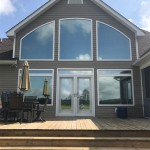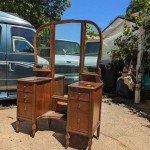Hanging Large Framed Mirrors: A Comprehensive Guide
Hanging a large framed mirror can transform a room, adding light, depth, and a touch of elegance. However, due to their size and weight, these mirrors require careful planning and execution to ensure secure installation and prevent accidents. This guide provides a comprehensive overview of the process, from assessing the wall type to utilizing appropriate hanging hardware.
1. Evaluating the Wall and Choosing the Right Location
Before purchasing any hardware or attempting to hang the mirror, carefully assess the wall where it will be placed. Different wall types require different hanging methods. Drywall is the most common wall type in modern homes, but older homes may have plaster walls, which are denser and more challenging to work with. Brick or concrete walls present another set of considerations, requiring specialized anchors and drills. Identifying the wall type is crucial for selecting the correct hardware and ensuring a secure hold.
The location of the mirror is equally important. Consider the room's layout, traffic flow, and the desired aesthetic effect. Avoid placing large mirrors in areas prone to high traffic or accidental bumps. Ensure the chosen location offers adequate support and can bear the weight of the mirror. Measure the mirror's dimensions and mark the desired position on the wall using a pencil and level. This pre-planning will ensure a centered and straight installation.
2. Selecting Appropriate Hanging Hardware
Choosing the right hanging hardware is paramount for safety and stability. D-rings and wire are a common choice for lighter mirrors, but heavier framed mirrors require more robust solutions. Heavy-duty picture hangers rated for the mirror's weight are a reliable option for drywall. For plaster or masonry walls, consider using wall anchors specifically designed for these materials. Toggle bolts, expansion bolts, and screw anchors are common choices for heavier items. These anchors create a secure grip within the wall cavity, providing a stronger hold than traditional screws.
When selecting screws, ensure they are the appropriate length and gauge for both the wall type and the hanging hardware. Using screws that are too short can result in inadequate support, while excessively long screws can damage the wall. Consulting a hardware professional can provide valuable guidance in selecting the correct hardware for specific wall types and mirror weights. Always choose hardware rated for a weight exceeding the mirror's actual weight for an added safety margin.
3. Utilizing Proper Hanging Techniques
Once the hardware is selected, proper hanging techniques are essential for a secure and level installation. Start by locating the wall studs using a stud finder. While not always possible to hang a heavy mirror directly on studs, knowing their location can help inform the placement of anchors and provide additional support. If hanging the mirror on drywall without hitting a stud, use appropriate drywall anchors and ensure they are installed correctly according to the manufacturer's instructions.
When using D-rings and wire, ensure the wire is securely attached to the D-rings and rated for the mirror's weight. The wire should be taut but not overly tight, allowing the mirror to hang slightly away from the wall. For heavier mirrors, using two or more hanging points provides greater stability and distributes the weight more evenly. After installing the hanging hardware on the wall, carefully lift the mirror and position it onto the hardware. Use a level to ensure the mirror is perfectly straight before fully releasing its weight onto the hooks or anchors.
After hanging the mirror, gently tug on it to verify the installation's security. If the mirror feels loose or unstable, re-evaluate the hardware and installation process. It's always advisable to have an assistant help with hanging large, heavy mirrors to prevent accidents and ensure proper placement. Taking the time to carefully plan and execute the hanging process will result in a secure and aesthetically pleasing installation.
Additionally, consider using safety backing on the mirror. This adhesive film is applied to the back of the mirror and helps prevent shattering in case of accidental impact. While not a substitute for proper hanging techniques, it provides an additional layer of safety. Finally, regularly inspect the hanging hardware and the wall around the mirror for any signs of wear or loosening. Addressing these issues promptly can prevent accidents and ensure the long-term stability of the installation.

How To Hang A Large Or Heavy Mirror

How To Hang A Heavy Mirror Or Picture True Value

How To Hang A Heavy Mirror Diy Family Handyman

Com Ogcau Floor Mirror Full Length Standing Hanging Or Leaning Against Wall Living Room

Decorative Wall Mirror Large Rectangular Broe Finish Hanging Interior Decor

Metal Square Rounded Frame Living Room Hanging Large Full Length Dressing Mirror

Mirror Wall Decor Large Framed Herringbone Handmade Rustic Wood Vanity 20 Colors Driftwood 5 Sizes
How To Hang A 100 Pound Mirror On Drywall Quora

36 X 24 Inches Large Bathroom Makeup Mirror Modern Rectangle Black Wall Mounted With Aluminum Frame Vertical Or Horizontal Hanging Decorative Mirrors For Vanity Living Room Bedroom Com

Manufacturer Whole Large Metal Framed Home Decor Bedroom Full Length Hanging Door Mirror Wall China Dressing Made In Com








